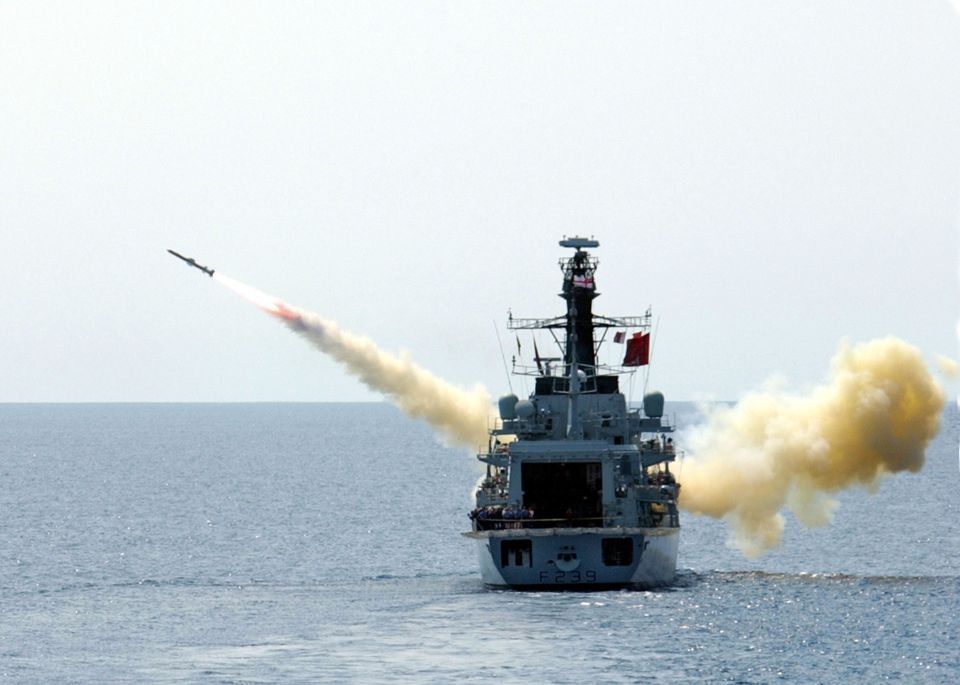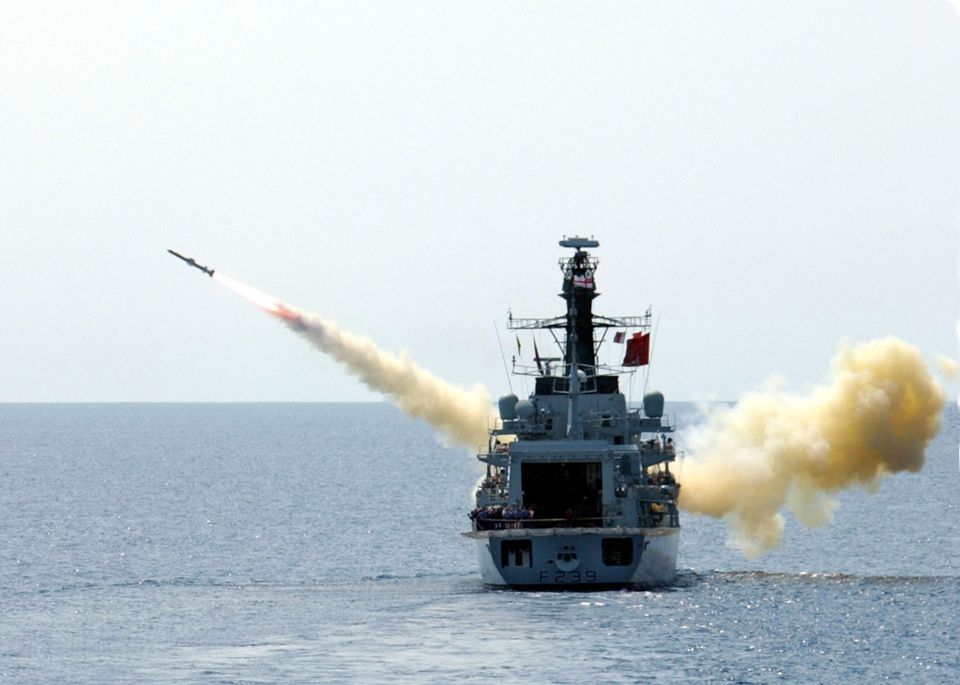CHINA scrambled its forces to watch British and American warships like hawks as they sailed through the contentious Taiwan Strait.
Beijing brazenly accused the Western allies of undermining peace in the region, despite despot Xi Jinping continuing to plot an invasion of neighbouring Taiwan.
HMS Richmond launches a missile during a joint US and British exercise
PAA fleet of allied ships sails through the ocean[/caption]
Chinese President Xi Jinping speaks during a military paradeReuters
Chinese naval and air forces monitored the American destroyer USS Higgins and the British frigate HMS Richmond as they passed through the strait on Friday.
The Taiwan Strait separates China from the island of Taiwan – a self-governing country that Beijing claims should be under its control.
China considers the strait to be its own territorial waters, with a military spokesperson calling the Anglo-American voyage a “harassment and provocation”.
The move “sent wrong signals and undermined peace and stability in the Taiwan Strait”, Senior Colonel Shi Yi said.
He added: “The command remains on high alert and is committed to safeguarding national sovereignty and ensuring regional peace and stability.”
But other countries, including Britain and America, consider much of the strait to be international waters.
US Indo-Pacific Command spokesperson Major Jason Welch told Newsweek the vessels “conducted a routine Taiwan Strait transit” where “freedoms of navigation and overflight apply in accordance with international law”.
“The ships transited through a corridor in the strait that is beyond the territorial sea of any coastal state,” he added.
It comes as China continues to threaten an invasion and annexation of Taiwan.
The island has never been under the control of the communist regime in Beijing, and has its own government, military and currency.
But dictator Xi Jinping believes Taiwan to be a breakaway province of China, and has refused to rule out use of force to annex it.
The United States does not officially recognise Taiwan, but it routinely supplies arms to its government.
Mounting tensions in the region have led to fears that China could be preparing for an invasion as soon as 2027.
The Canadian frigate HMCS Ville de Quebec and the Australian destroyer HMAS Brisbane also sailed through the Taiwan Strait last week.
In turn, China flexed its military muscles by showing off its newest and biggest aircraft carrier near the island.
Named after Fujian – a Chinese province that borders the Taiwan Strait – this mammoth vessel was spotted on “sea trials” ahead of its commissioning.
APChina’s aircraft carrier, the Fujian, was seen sailing through the Taiwan Strait on Friday[/caption]
The ship is part of Beijing’s push to bolster its military capabilities as China readies itself for war.
Foreign ministry spokesperson Lin Jian told the South China Morning Post: “Cross-sea tests and training for the Fujian are part of a regular arrangement in the aircraft carrier’s construction process, and it is not aimed at any specific target.
“The activities of Chinese warships in the relevant waters are fully in line with China’s domestic law and international law.”
Both China and Taiwan appear to be ramping up their preparations for an anticipated conflict.
Satellite images analysed by the Wall Street Journal show China rapidly developing new naval and air sites along its eastern coast.
Many analysts believe such work is purely designed to help Beijing seize Taiwan.
Across the strait, Taiwan’s government is poised to issue fresh security guidelines to its citizens on what to do if they spot enemy forces.
Why does China want Taiwan
by Sayan Bose
TAIWAN insists it is an independent nation after splitting from mainland China amid civil war in 1949.
But China claims Taiwan remains a part of its territory with which it must eventually be reunified – and has not ruled out the use of force to take the island and place it under Beijing’s control.
The island, which is roughly 100 miles from the coast of south-east China, sees itself as distinct from the Chinese mainland, with its own constitution and democratically-elected leaders.
Taiwan sits in the so-called “first island chain”, which includes a list of US-friendly territories that are crucial to Washington’s foreign policy in the region.
This also puts it in an ideal situation to slow a Chinese attack on the West.
And with tensions between the two nations high, Taiwan is likely to aid China’s enemy if it means keeping its independence.
Taiwan’s economy is another factor in China’s desperation to reclaim the land.
If China takes the island, it could be freer to project power in the western Pacific and rival the US, thanks to much of the world’s electronics being made in Taiwan.
This would allow Beijing to have control over an industry that drives the global economy.
China insists that its intentions are peaceful, but President Xi Jinping has also used threats towards the small island nation.
In this years New Year’s address, President Xi even said that the people on both sides of the Taiwan Strait are one family.
He has previously called the independence of Taiwan a futile effort and that annexation by Beijing is a “historical inevitability”.


